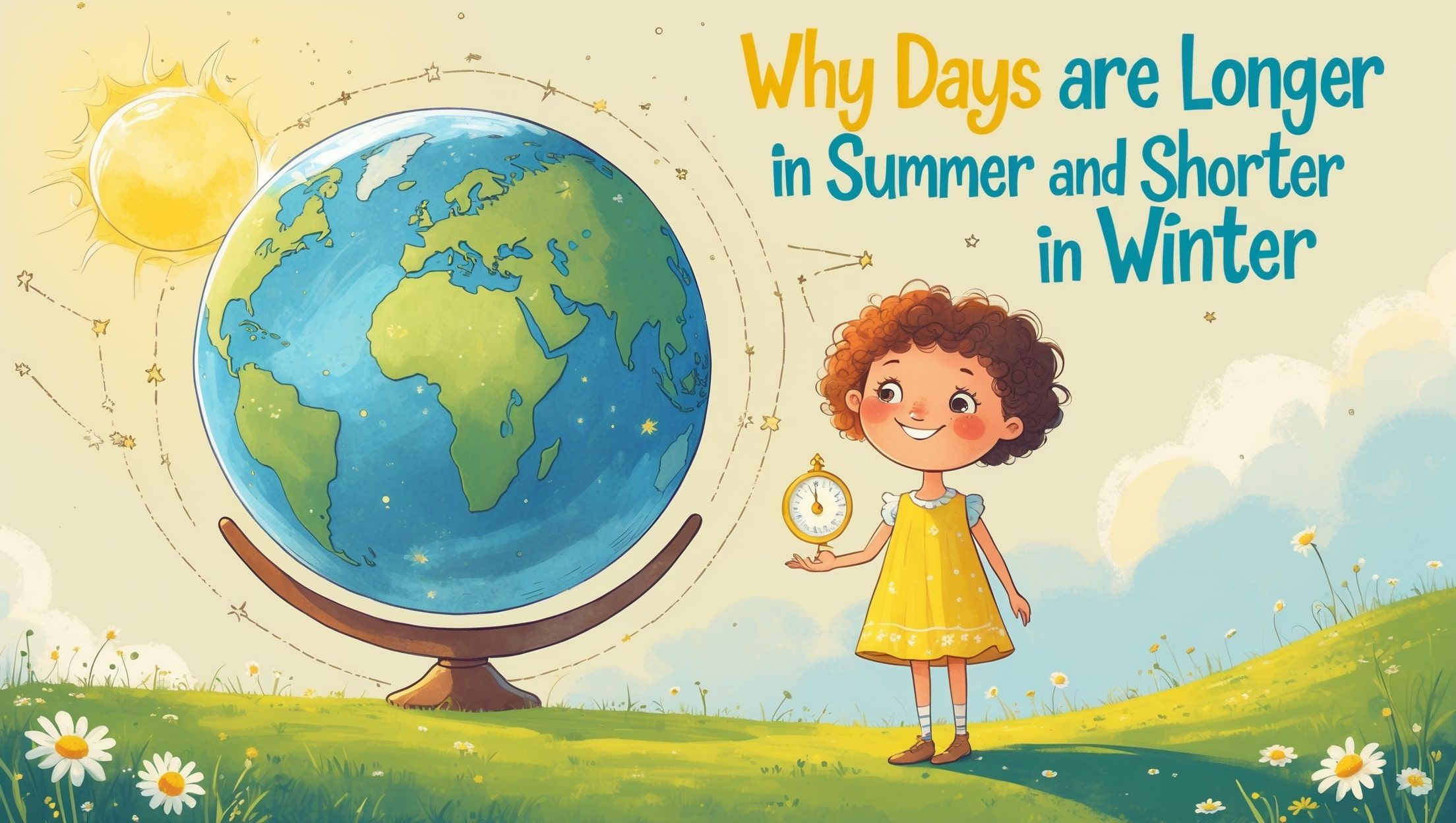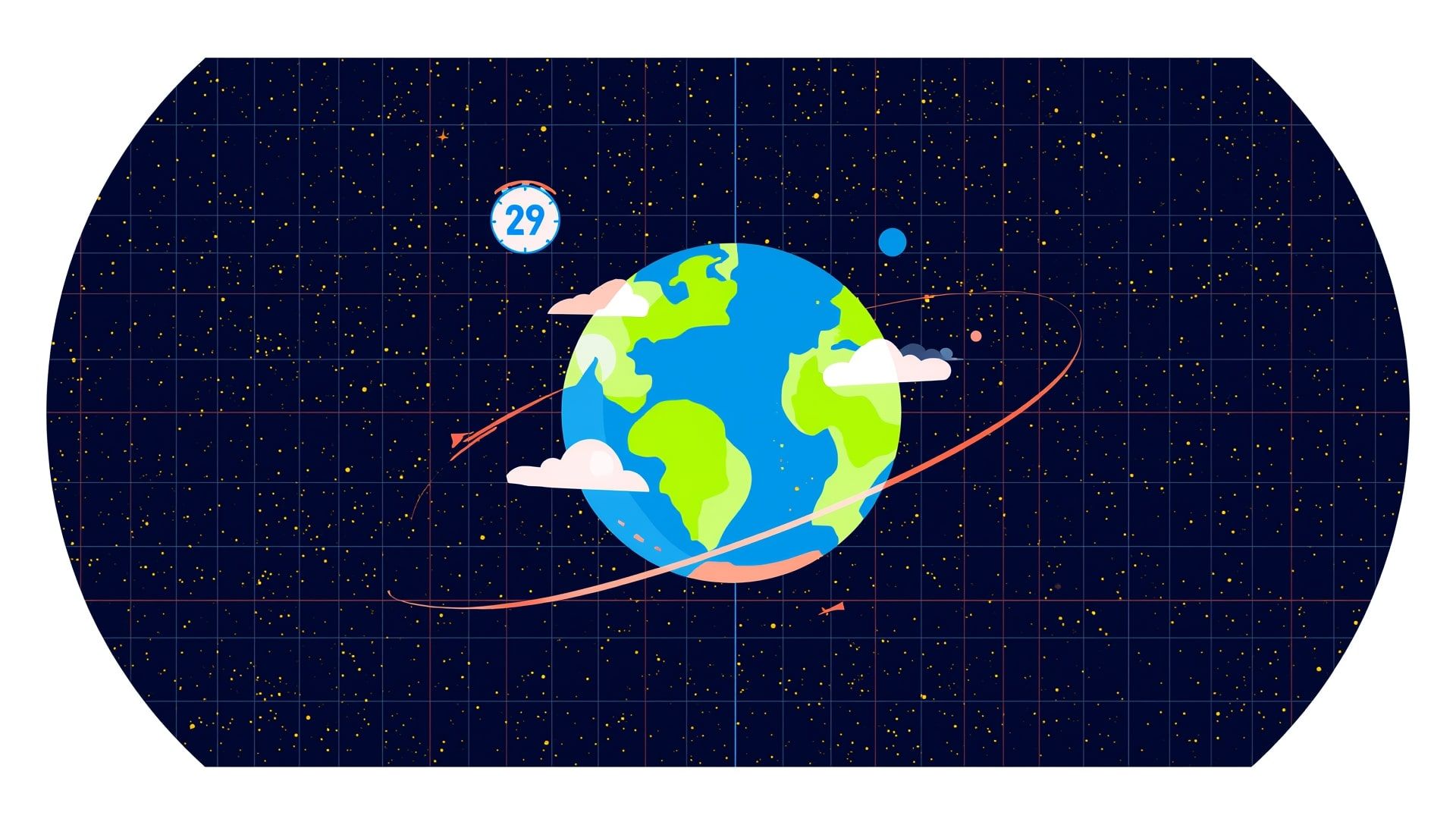Ever noticed how summer days seem to stretch on forever, while winter evenings sneak up before dinner? You're not imagining things. There's a simple, cosmic reason why this happens, and it's not just about the heat or cold. It has everything to do with how our planet moves.
Earth Isn’t Sitting Straight
Our planet doesn’t spin like a top standing upright. Instead, Earth leans at about 23.5 degrees. This tilt is why we have seasons at all. Without it, things would be a lot more even, both in daylight and temperature, but also a lot less interesting. You can visualize this more clearly by looking at a global time zone map, which shows how sunlight and rotation interact across regions.
As Earth orbits the Sun, this tilt stays the same. That means during certain times of the year, one half of the planet leans more toward the Sun. In June, the Northern Hemisphere leans in. In December, it leans away.
Sunlight Hits Differently Through the Year
When your part of the planet leans toward the Sun, sunlight sticks around longer. That’s your summer. The Sun takes a longer path through the sky, rising earlier and setting later. The days stretch out. This variation also explains why daylight schedules differ between countries around the world.
In winter, the opposite happens. The Sun doesn’t climb as high. It rises later and sets sooner. The days shrink. You end up driving home from work in the dark, even if it’s only 5 PM.
Why the Tilt Makes Such a Big Difference
The tilt of Earth’s axis changes the angle at which sunlight hits your part of the world. In summer, the Sun is more overhead, so the light is direct and strong. In winter, it’s at a slant, so sunlight spreads out more and feels weaker. You can explore how these changes are tracked through solstices and equinoxes in timekeeping.
But angle isn't the only thing that changes. The path the Sun takes through the sky changes too. Longer paths mean longer days. Shorter paths? You guessed it; shorter days.
What You’ll Notice in Real Life
Depending on where you live, this effect can be barely noticeable or completely dramatic. Closer to the equator, days and nights stay pretty even all year. The further from the equator you are, the more extreme the change gets. If you check a world clock, you’ll notice how sunrise and sunset times vary drastically by location.
In places like Norway or Alaska, summer days can last nearly 24 hours. In winter, the sun may barely peek over the horizon, an effect closely tied to why days lengthen or shorten seasonally.
5 Quick Facts That Explain It All
- Earth’s axis is tilted at about 23.5 degrees.
- This tilt causes seasons and affects day length.
- In summer, your hemisphere leans toward the Sun, giving longer days.
- In winter, it leans away, leading to shorter days.
- The equator sees the least change in daylight throughout the year.
How This Subtle Tilt Shapes Daily Life
That tilt may seem small, but it affects your mood, sleep, and routines. More daylight in summer often boosts energy. People get outside more, stay up later, and pack their days full of activity. In winter, the short days can lead to less movement and even seasonal blues. Some use alarms and timers to keep consistent routines despite shifting daylight.
Many cultures have long marked the solstices, the longest and shortest days of the year, as something special. Bonfires, feasts, and festivals often trace back to this ancient awareness of sunlight’s rhythms, which you can explore in the context of religious timekeeping traditions.
So next time the sun doesn’t set until nearly 9 PM, or it’s dark by 4 in the afternoon, remember: it’s not random. It’s the graceful lean of our spinning planet, keeping time with the Sun like a cosmic clock.









